 Thanks: 0
 Likes: 0
 Dislikes: 0
-
Re: The 10 @ 10 Technique for picking up a bead of product with a rotary buffer
 Originally Posted by masterpartha

Just a basic query, which I have been having for quite sometime.
Do you prime the pad before using the 10@10 technique?
Or a dry pad will do? I want to try it on my DA so wanted to clarify before going ahead and doing it.
No.
Interestingly, I just received this same question in a Private Message.
Because the pad on a rotary buffer spins in a single rotational direction, if you prime the pad then bring the buffer up to speed you can and will sling out any excess product.
The point of this article was to show you how to get product on your pad and that's by using the 10 @ 10 Technique. Once you master the 10 @ 10 Technique it becomes relative.
I'm pretty sure I explain this in this video....
Tips for using a Rotary Buffer and the Flex 3401 on vertical panels
You prime pads with the product you're going to use when using dual action polishers.
When using rotary buffers you "can" prime your pad using a wetting agent, but this is really ONLY when using an aggressive or sharp foam cutting pad or wool cutting pad.
Now I do prime the EDGES of a pad when edging a panel, both foam and wool but that's to lubricate the pad to help prevent the potential burning or twisting of paint when buffing on an edge and I have an article for this right here...
Rotary Buffer Tip - Prime the side edges of foam cutting pads
Here's a technique that can save your butt when doing aggressive cutting into curved panels. It was buried in another article of mine written back in 2010.
Anytime you're buffing next to an adjacent panel and it's possible you could run the vertical or side edge of your pad into the paint, lubricate it by working some of the product you're using on the face of the pad onto and into the foam.
This will help to keep from generating too much heat and burning the paint and also in the case of these lower panels, help me to remove some of the sanding marks on the angled section.
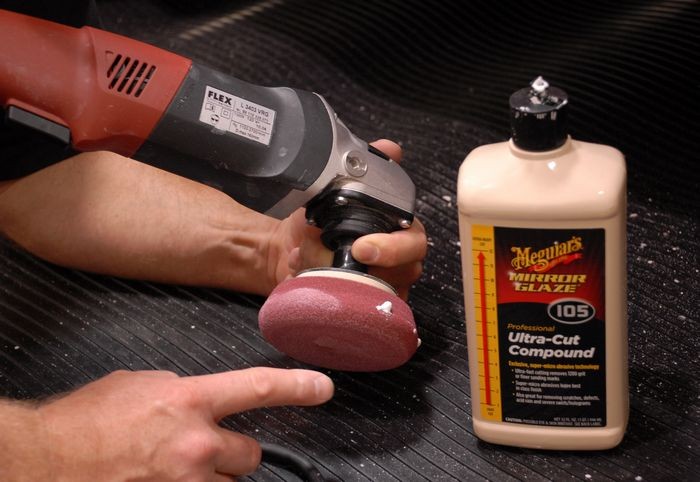

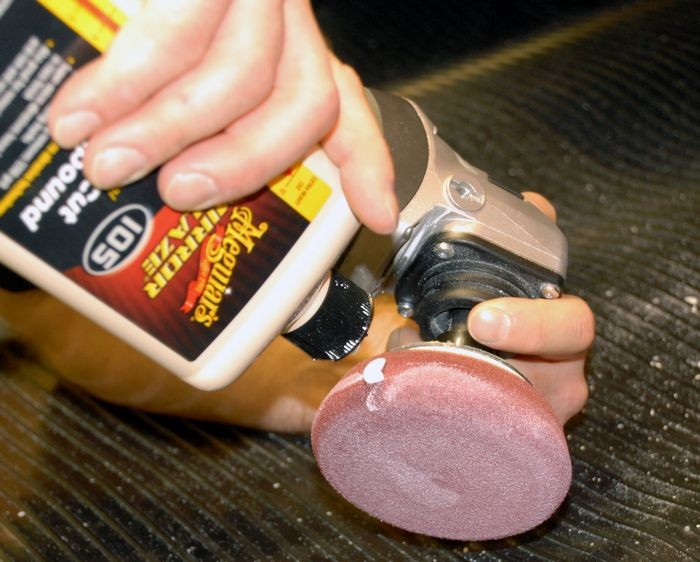
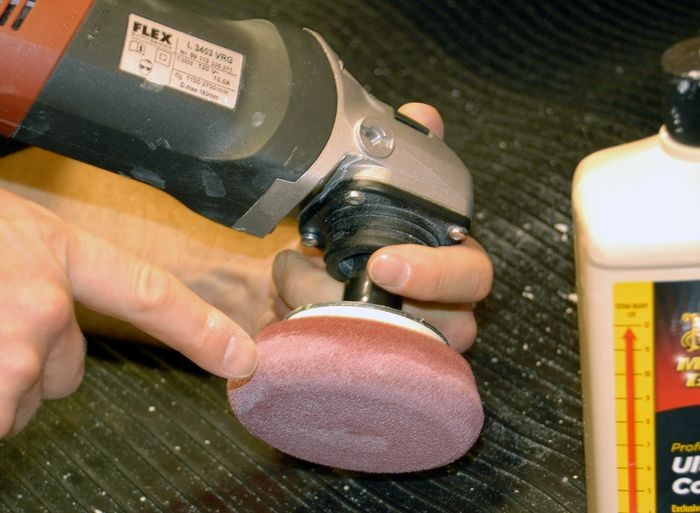
It's this little long thin section I'm trying to improve and protect.
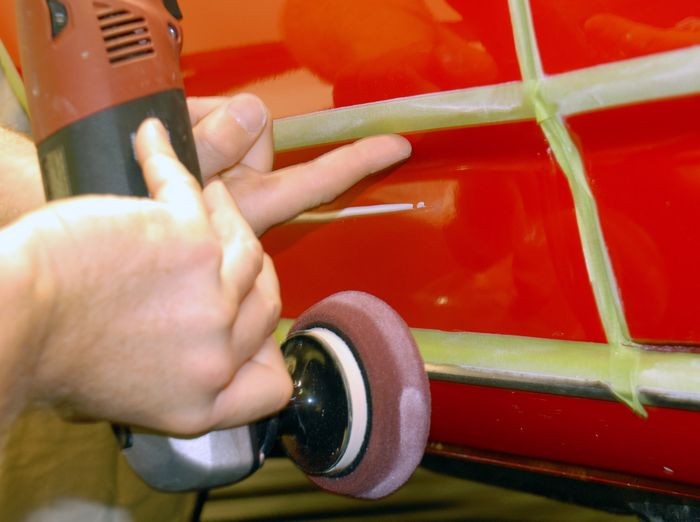
Picking up just a portion of the bead of product using the 10 @ 10 technique and then working it over a portion of this panel.
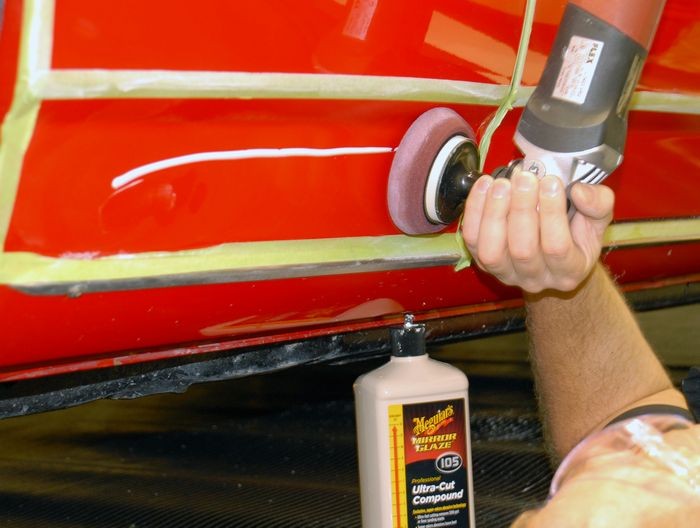


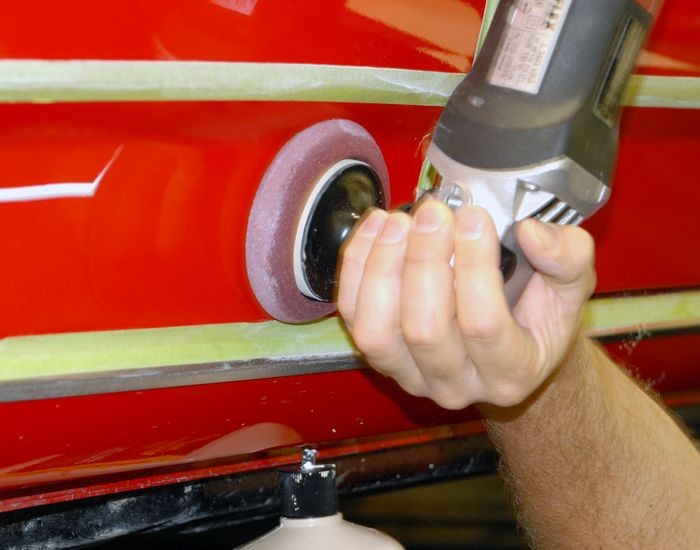
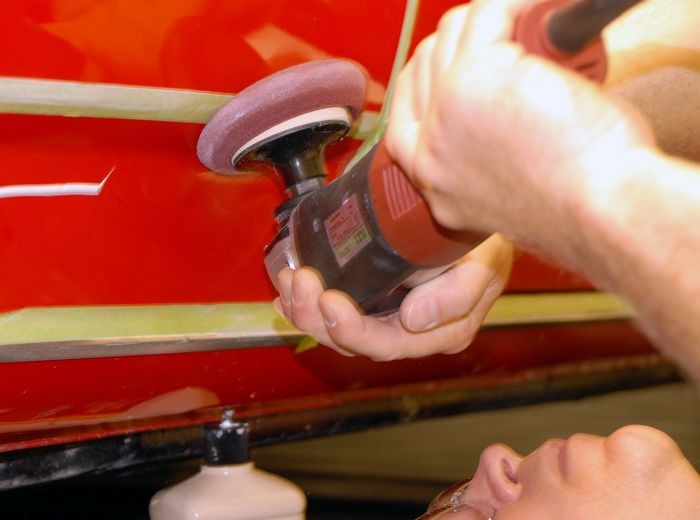
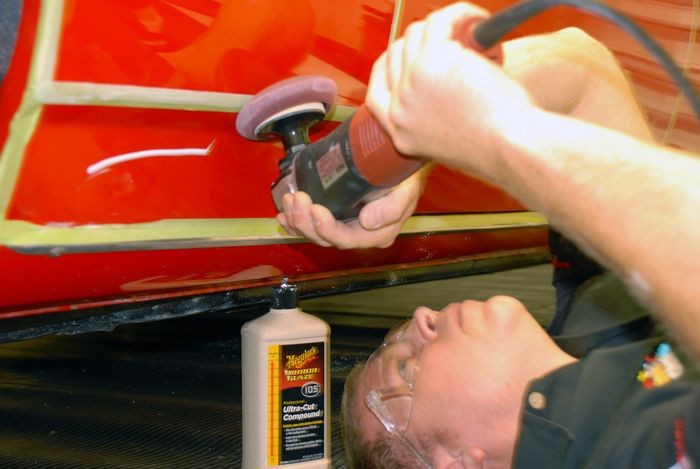
Note the safety glasses... don't want any splatter in my eyes...
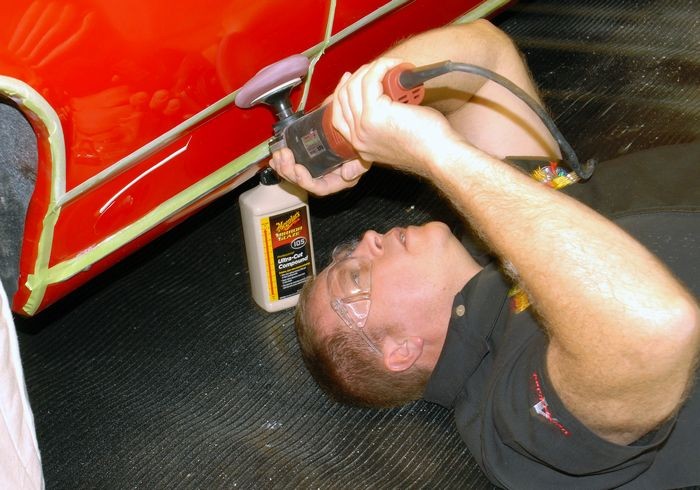
After removing the sanding marks in the front portion of that panel I picked up my bead and tackled the rear portion...


My personal preference is not handle, if there is a handle I actually prefer a stick handle over a hoop handle as I can quickly and easily either remove it or move it from side to side depending upon how it works best for the panel.
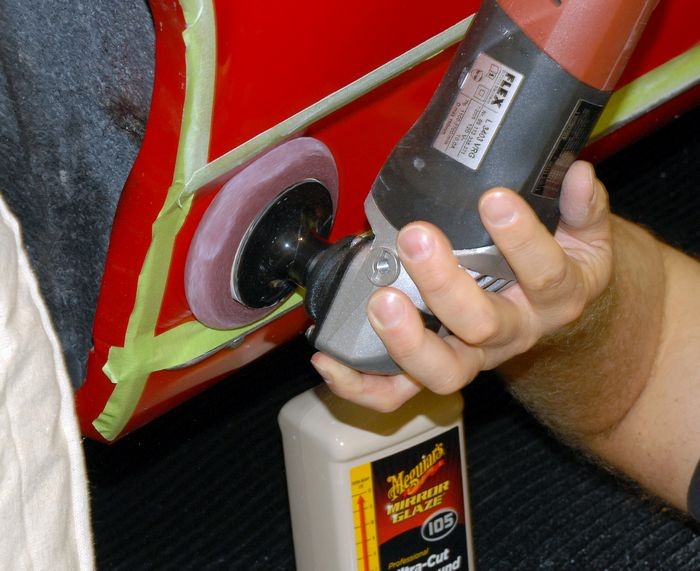

Before
The paint was mottled. I sanded it flat and then removed my sanding marks.
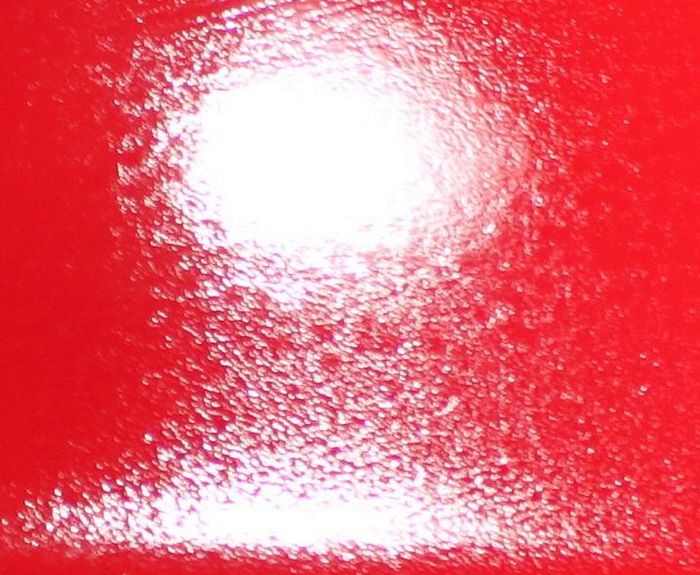
After
Much better...

You do the same thing when using a wool pad that's dry I just don't have the pictures showing this.
Be aware, when you prime the edge of ANY pad on a rotary buffer, be prepared for the pad to sling off any excess product when you first turn the polisher on.
If you have a rotary buffer that dials down to 600 RPM then it's not really an issue is you start out at the low setting.
Also, you can just turn the buffer on and off "a little" to let the pad spin just a little when held against the paint you're going to buff and this will deposit the excess product onto the paint you're going to buff in stead of slinging it all over the place.
A second also, use common sense when priming the edge of the pad, it shouldn't be sloppy messy with too much product.
I also will take my finger and spread product out over the area I'm going to buff to lubricate the paint.
It's all about NOT burning through the paint when buffing intricate and tight areas.
Hope that helps....

Similar Threads
-
By Mike Phillips in forum Ask your detailing questions!
Replies: 5
Last Post: 11-06-2014, 03:08 AM
-
By Mike Phillips in forum How to articles
Replies: 9
Last Post: 06-02-2014, 06:25 AM
-
By orcat in forum Ask your detailing questions!
Replies: 2
Last Post: 11-22-2013, 07:11 AM
-
By Mike Phillips in forum How to articles
Replies: 3
Last Post: 08-28-2012, 07:26 AM
-
By Mike Phillips in forum Flex Polishers
Replies: 9
Last Post: 03-24-2011, 06:34 PM
 Members who have read this thread: 0
Members who have read this thread: 0
There are no members to list at the moment.
 Posting Permissions
Posting Permissions
- You may not post new threads
- You may not post replies
- You may not post attachments
- You may not edit your posts
-
Forum Rules
|
| S |
M |
T |
W |
T |
F |
S |
| 31 |
1
|
2
|
3
|
4
|
5
|
6
|
|
7
|
8
|
9
|
10
|
11
|
12
|
13
|
|
14
|
15
|
16
|
17
|
18
|
19
|
20
|
|
21
|
22
|
23
|
24
|
25
|
26
|
27
|
|
28
|
29
|
30
| 1 | 2 | 3 | 4 |
|













 Thanks:
Thanks:  Likes:
Likes:  Dislikes:
Dislikes: 



















 Reply With Quote
Reply With Quote
Bookmarks